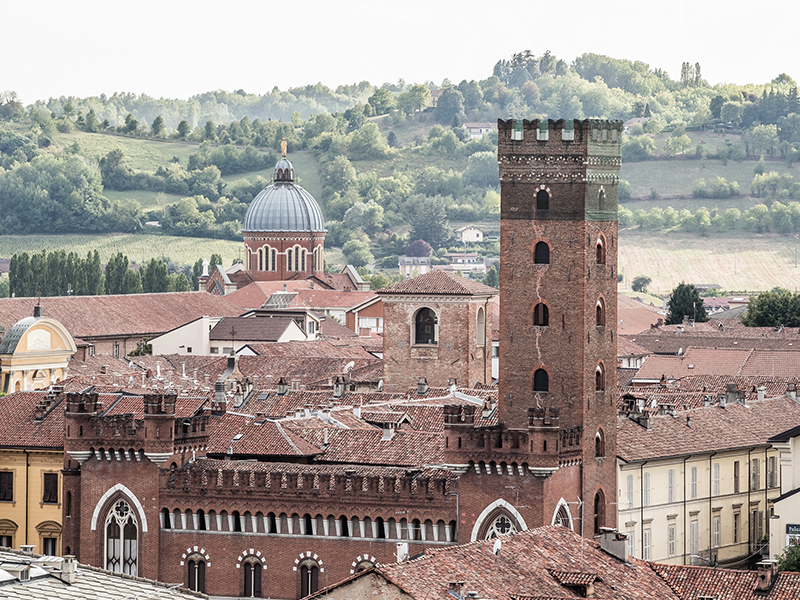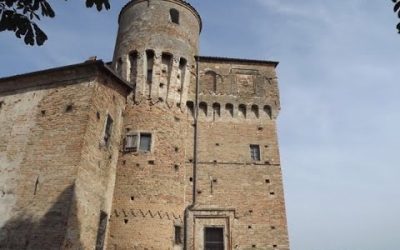Asti Medieval Itinerary: Boroughs, Districts, and Towers
Asti, a city embedded in the heart of Italy’s Piedmont region, is a tapestry of medieval beauty. With every step, you’re transported back to a time when the city was a bustling center of commerce, marked by its merchant aristocracy, and when grand towers symbolized the stature of influential families.
Embarking on this journey isn’t just about soaking in history; it’s also a tactile experience. The cobbled streets, the cool touch of century-old stone walls, and the distant chimes from the Torre Troyana create a multisensory immersion. As you chart your course from Piazza San Secondo to the Complesso di San Pietro, each step transports you deeper into Asti’s medieval soul. Whether you’re an avid historian or a casual traveler, this itinerary promises a captivating blend of the past and present, ensuring your trip to Asti is nothing short of unforgettable.
- Duration:
- Ideal: 1 day for an immersive experience.
- Short: 6 hours for highlights.
- Expectations:
- Sights: Medieval structures, 12 historic towers, cobbled streets, lively squares, and grand palaces and churches.
- Terrain: Occasional uphill climbs, uneven paths.
- Tips: Wear comfortable footwear.
Asti Medieval Itinerary: Boroughs, Districts, and Towers

The Asti Medieval Itinerary, a captivating journey through the boroughs, districts, and towers of Asti, typically takes about two days to complete. This allows visitors ample time to explore each historical landmark, immerse themselves in the medieval ambiance, and take breaks to enjoy local cuisine. For those with a tighter schedule, it’s feasible to cover the main highlights in a single day; however, this would entail a brisker pace.
Embarking on Asti’s medieval tour is akin to stepping back in time. Along the way, expect to encounter towering medieval structures, including the surviving twelve of the once-numerous towers, each narrating tales of Asti’s rich past. The cobbled streets, lively squares like Piazza San Secondo, and the awe-inspiring architecture of palaces and churches all add to the charm. As you navigate the route, also anticipate occasional uphill climbs and uneven paths – wear comfortable footwear!
Stage A: Piazza San Secondo and Collegiata di San Secondo Your journey begins at Piazza San Secondo, a heartbeat of Asti. Dominated by the Romanesque-gothic Collegiata di San Secondo, the church beckons with treasures: a 10th-century crypt housing the remains of San Secondo, Gandolfino da Roreto’s “Adoration of the Magi,” and the intricate Palio drapes.
Stage B: Piazza Statuto Meandering along Via Cavour, you’ll find Piazza Statuto, once the hub of Asti’s judicial system. The ancient courthouses here hint at tales of justice and trial. Not to be missed is the Torre Guttuari, standing adjacent to its namesake palace and a testament to the influential Guttuari family.
Stage C: Palazzo del Podestà and Torre Comentina As you trace your steps back towards Piazza San Secondo, the 13th-century Palazzo del Podestà captures attention with its preserved medieval architecture. A short stroll along Corso Alfieri, the city’s main artery, reveals the captivating Torre Comentina, a beacon of medieval craftsmanship.
Stage D: Palazzo Gazelli and Chiesa di San Martino Next, immerse yourself in the elegance of Palazzo Gazelli and the neighboring Torre Ponte di Lombriasco, which stands guard near the Church of San Martino. The complex is a blend of medieval and baroque architectures, telling tales of eras merged in harmony.
Stage E: Casa-forte dei Roero Venturing into Via Roero reveals a wealth of architectural history. The Casa-forte dei Roero of Cortanze and Casa-forte dei Roero of Monteu are imposing edifices that once belonged to distinct branches of the influential Roero family, whose power and reach were significant in medieval Asti.
Stage F: Torre De Regibus and Torre Quartero A stroll along Corso Alfieri brings you to the stately Torre de Regibus. Nearby is the Torre Quartero, now home to the Museum of Mineralogy M.A.D.M.A.X. Together with a now-lost third tower, they once formed the majestic “Tre Re” complex, a testament to Asti’s towering past.
Stage G: Torre Rossa Continuing west on Corso Alfieri, the Torre Rossa, made of brick and sandstone, stands proud. Initially constructed during the Roman era in the 1st century AD, its subsequent medieval elevation in the 11th century adds to its unique architectural blend.
Stage VIII: Palazzo Mazzola Your next stop is the Palazzo Mazzola, which houses both the Municipal Historical Archives and the Museo del Palio di Asti. Though its current structure hails from the early 16th century, its roots delve deep into medieval times. The archives inside tell Asti’s tales through illuminated manuscripts, including the precious Codex Astensis, as well as through ancient maps and city ordinances.
Stage IX: Cattedrale di Santa Maria Assunta The majestic Cattedrale di Asti awaits, flaunting its beautiful Gothic features. Nearby is the Church of San Giovanni with its crypt, now the Museo Diocesano’s location. The space between these churches once cradled an impressive cemetery, laying to rest notable figures from the late medieval era.
Stage X: Via Natta As you proceed along Via Natta, Casa Pelletta, the Tower and palace of the ancient Natta family, and the Verasis-Asinari palace beckon. Venturing onto Via Giobert reveals medieval-inspired buildings like Palazzo Della Rovere, Casa Strata, and, further along, between Via Carducci and Via Monsignor Rossi, the Palazzo Bunej. This palace has been the bishop’s residence since the 15th century and originally stood between two ancient towers.
Stage I: Torre Troyana The iconic Torre Troyana in Piazza Medici is your next destination. This tower, once part of the Troya family’s palatial estate, was later incorporated into the Ducal Palace complex. Today, after purchasing a ticket or using a Smarticket, you can ascend its 44 meters to enjoy breathtaking panoramic views of Asti and its encompassing hills.
Stage XII: Complesso di San Pietro Concluding your journey, the district of San Pietro invites exploration. Here, the Complesso di San Pietro and its spectacular early 12th-century baptistery beckon. The adjoining Valperga chapel from the mid-15th century, the cloister, and the prior’s house are must-visits. This site once housed the Archaeological Museum, adding another layer of history to this fascinating locale.
All the tower in the asti city center
Asti, in the Piedmont region of Italy, is renowned for its rich history and architectural heritage, especially its medieval towers. These towers are remnants of a time when noble families showed off their wealth and influence by building these tall structures. At its peak, Asti had over 100 towers, rivaling other Italian cities like Bologna and San Gimignano. While many of these towers have since been demolished or have crumbled over time, several still stand tall in the city center. Here’s a list of some of the prominent towers in the city center of Asti:
A. Torre dei Roero Monteu: Located on Via Roero, this tower stands as a testament to the historical and architectural influence of the Roero family in Asti. Its central position makes it a key stop for those touring the historic center.
B. Torre De Regibus: A commanding structure on Via Roero, this tower recalls the might and prominence of medieval noble families. Its robust framework speaks to the grandeur of its time.
D. Torre Quartero: Also situated on Via Roero, this architectural gem further showcases Asti’s medieval legacy. Its proximity to Torre De Regibus makes it a significant landmark in the city’s history.
E. Torre Rossa: With its Roman origins and distinctive red bricks, this tower not only serves as a point of reference but also tells an ancient tale, symbolizing Asti’s longevity.
F. Palazzo Mazzola: Positioned on Via Cardinale Massaia, this historic palace not only charms with its architecture but also houses the Museo del Palio di Asti, making it a must-visit for those keen on delving into local culture.
G. Piazza Cattedrale: More than just a square, this is Asti’s spiritual heart. Housing its grand cathedral, it stands as a representation of the city’s devotion and artistry.
H. Torre Troyana: One of the most iconic towers in Asti, it offers a panoramic view over the city, allowing visitors to appreciate the urban landscape in all its glory.
I. Complesso del Battistero di San Pietro: Besides being a significant place of worship, this complex provides a deep dive into sacred art and the ecclesiastical history of Asti.
J. Torre Comentina: Nestled near Piazza Roma, this tower is among Asti’s finest examples of medieval architecture with its well-preserved structure and proximity to other key historic sites.
K. Torre del Palazzo del Podestà: An integral part of the Palazzo del Podestà, this tower symbolizes the city’s jurisdiction and medieval might.
L. Torre dell’Orologio: Situated near Piazza San Secondo, this tower stands not just for its practical function but also as a testament to Asti’s ability to blend utility with aesthetics.
M. Torre Pinottino: While lesser-known compared to its counterparts, it adds another dimension to Asti’s architectural tapestry.
N. Torre Littoria: A remnant from the Fascist era, this tower represents a more modern chapter in Asti’s history but remains a notable part of the city’s skyline.
While visiting Asti, it’s recommended to take a guided tour or explore on foot to truly appreciate these towers and the stories behind them. Each tower has its own history and architectural uniqueness that makes Asti a destination for history and architecture enthusiasts.
Asti Rinascimentale Walking Itinerary

Step back into the Renaissance era in Asti and immerse yourself in the artistic wonders of the 16th century. The city, deeply influenced by the genius of Gandolfino da Roreto, boasts exceptional artistic productions from this period.
Many of Asti’s palaces, once owned by illustrious families like Malabayla and Falletti, exhibit Renaissance architectural brilliance. Allow yourself to be captivated by the mesmerizing loggia of Palazzo Zoya and the refined elegance of Palazzo Mazzola. The aura of the 15th and 16th centuries is palpable here.
Best Season to Visit Asti
The best season to visit Asti, a picturesque town in Italy’s Piedmont region, is late spring to early autumn, particularly from May to September. This period offers warm weather, vibrant landscapes, and a plethora of events such as the renowned Palio di Asti in September. Settembre astigiano is the place to be for enjoy piedmont region. While summer brings life and festivities, winter provides a serene, less crowded experience with snow-capped landscapes. Ultimately, the choice depends on your preference for weather and activities.. Understanding the seasonal differences can help you choose the best time for your visit.
Warm Months – Late Spring to Early Autumn: Late spring to early autumn, particularly from May to September, is generally considered the best time to visit Asti for those who enjoy warm weather. During this period, the city comes alive with numerous events and festivals, most notably the renowned Palio di Asti, which takes place in September. The landscape is vibrant, making it an ideal time for strolls through its medieval streets, visiting vineyards, and savoring the local cuisine at outdoor eateries. However, the summer months, especially July and August, can get quite hot. For example, on a typical July day, you might find yourself seeking shade during the midday sun, sipping on a chilled glass of Asti Spumante to cool down.
Cold Months – Late Autumn to Early Spring: Late autumn to early spring, from October to April, brings a colder, quieter charm to Asti. The city is less crowded, providing a more intimate experience of its historical sites and cozy restaurants. The surrounding hills might be blanketed in snow, offering picturesque views that contrast beautifully with the reddish-brown medieval structures of the city. However, the chill in the air can be biting, especially in January. For instance, a day in January might see you wrapped in a warm scarf and gloves, savoring a rich and steamy bowl of “bagna càuda”, a local hot dip, to fend off the cold.
When Visiting Asti
- Duration: Ideally, allocate two days to explore the proposed itinerary. This ensures ample time at each site, allowing you to immerse yourself in the history and architecture.
- Guided Tours: While Asti is navigable on your own, consider hiring a local guide or using a digital guidebook. Their insights can add depth to your experience.
- Comfortable Footwear: Given that you’ll be walking through ancient boroughs and districts, ensure you’re wearing comfortable shoes. Some areas have uneven cobblestones, characteristic of medieval cities.
- Local Cuisine: Don’t miss out on Asti’s gastronomy. The region is known for its wines, notably Asti Spumante, and traditional dishes like “Agnolotti al Plin” (pinched ravioli).
What to Expect from Asti, Italy
- Architectural Marvels: Asti’s skyline, dotted with towers and spires, is a relic of its medieval grandeur. Expect to see impressive structures, from grand palazzos to ancient fortresses.
- Historical Insights: Plaques and signs, mostly in Italian, adorn many sites. If you’re not fluent, a translation app or guidebook can be handy.
- Vibrant Atmosphere: Particularly if visiting during local festivals, expect lively processions, medieval reenactments, and a bustling atmosphere.
- Art and Relics: Churches like the Collegiata di San Secondo and Cattedrale di Santa Maria Assunta house exquisite medieval art pieces, frescoes, and relics.
- Panoramic Views: Ascending towers such as the Torre Troyana offers breathtaking views of Asti and the surrounding countryside. The climb might be steep, but the vistas are rewarding.
A Glimpse of Asti’s Historical Past Asti’s history is rich with tales of Guelphs and Ghibellines at war. Although many of its towers have since been lost to time, twelve still stand, showcasing the city’s resilience and its unwavering commitment to preserving its history. As you wander through its lanes, the Romanesque medieval influence is palpable, especially when the city comes alive with traditions like the Palio and Arti e Mercanti festivals.
Final Thoughts
With every step taken in Asti, you’re not just walking on cobblestones; you’re traversing centuries of history, art, power, and faith. From towering remnants of influential families to sacred spaces of worship, Asti’s medieval journey promises tales of times long gone but never forgotten. Embrace its stories, and let Asti etch itself into your memory.






